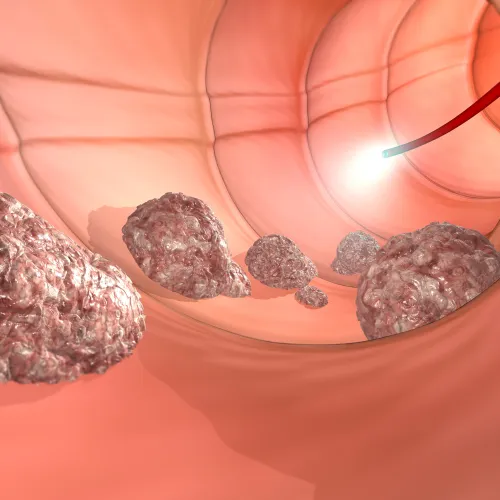Break Down Esophageal Case for Appropriate Code(s)
Prosthesis placement is just one step. When your surgeon faces an encounter layered with multiple steps, you’ll need to know how and when to identify and separately code each procedure. Read on for a detailed analysis of how to code an operative report involving replacement of a tracheoesophageal (TE) speech prosthesis and a rigid esophagoscopy with biopsy. The patient had a prior total laryngectomy with placement of a voice prosthesis, which is no longer functioning. Analyze Surgical Steps Before Assigning Code(s) Your surgeon’s organization of the op report should provide you with a broad overview of what different stages of work the case involves. Tip: Always start by looking at the surgeon’s exam header for each respective component of the procedure. In this case, you’ll find the following: 1. Background and surgical prep With that intro, let’s break the operative report into individual components. Establish Pertinent Coding Info Have a look at the first part of the procedure, which includes notes pertaining to various aspects of the patient’s condition, as well as some preparation information: Part 1: The patient had previously undergone a total laryngectomy for larynx cancer, including placement of a tracheoesophageal speech prosthesis. Malfunctioning of the TE speech prosthesis led to multiple dilations and tract debridement of granulation tissue without successful voice restoration. An adequate level of sedation was achieved, and the laryngectomy stoma was visualized. For this part of the note, you have to filter out the information that’s not necessarily pertinent to assigning the correct CPT® codes. The physician identifies the surgical hole created in the neck known as a stoma, which is the result of a previous total laryngectomy, including removal of the patient’s voice box. This stoma is the route of insertion the surgeon will use to remove the previously existing voice prosthesis and replace it with a functioning device. This part of the note doesn’t represent a completed surgical procedure. Medical necessity: Although the context surrounding the need for a new voice prosthesis isn’t relevant to assigning procedure codes, the information is important to identify medical necessity for the surgeon’s work. You might identify the following ICD-10-CM codes to capture the patient’s condition, which may indicate medical necessity for the procedure, depending on the payer: Report Codes for Dilation, Prosthesis Placement Next, evaluate the portion of the operative report that involves the esophageal dilation and subsequent tracheoesophageal prosthesis placement: Parts 2 and 3: After removing the 12mm prosthesis, I assessed the tract, and there was no significant amount of granulation tissue. I could visualize the esophageal lumen. I then passed a hypopharyngeal bougie dilator through the stoma and advanced it to dilate both the tracheal as well as the esophageal lumen. The dilator was then removed, and I placed a #12 speech prosthesis without difficulty, and I could feel the inner flange. There was approximately a 1- or 2-mm excess length of the prosthesis, so I removed the 12 mm and I placed the 8 mm prosthesis, which also engaged within the inner lumen of the esophagus without difficulty. Following the removal of the malfunctioning prosthesis, the physician evaluates the vocal tract for any tissue or debris impeding access to the esophageal lumen and trachea. The surgeon then documents the dilation of the lumen and trachea using a hypopharyngeal bougie dilator. The bougie dilation process is a technique used by the surgeon to widen the esophagus in preparation for placement of the new prosthesis. The surgeon first attempts positioning a 12 mm prosthesis before resorting to an 8 mm-sized prosthesis that fits more comfortably within the inner lumen of the esophagus. Before diving into the next portion of the operative note, you’ll want to outline what CPT® codes are available to report so far. Dilation: For the dilation of the esophageal lumen, you should report 43450 (Dilation of esophagus, by unguided sound or bougie, single or multiple passes). This code fully encompasses the dilation the surgeon performed, so no modifier is necessary. Avoid: Next, you need to know why you should not consider reporting the voice prosthesis placement using 31611 (Construction of tracheoesophageal fistula and subsequent insertion of an alaryngeal speech prosthesis (eg, voice button, Blom-Singer prosthesis)) with modifier 52 (Reduced services). Note the portion of the operative report detailing that the surgeon is working within the confines of the previously performed voice prosthesis placement. The surgeon’s job is easier this time, using the existing opening rather than performing the work to create a new tracheoesophageal fistula. “Although it may seem appropriate to code the replacement of the prosthesis as 31611 with modifier 52, there is a concern that the placement of the prosthesis is a very small component of the total CPT® code 31611, while the creation of the tracheoesophageal fistula involves the more significant portion of the CPT® code,” explains Barbara J. Cobuzzi, MBA, CPC, COC, CPC-P, CPC-I, CENTC, CPCO, AAPC Fellow, of CRN Healthcare in Tinton Falls, New Jersey. “Based on this division, it is hard to justify applying modifier 52 to 31611 for the replacement of the prosthesis. Therefore, you should code the change of a voice prosthesis using the unlisted code 31899 (Unlisted procedure, trachea, bronchi).” Confirm Separate Rigid Esophagoscopy Code With NCCI Check Finally, have a look at the remaining portion of the operative reporting documenting the rigid esophagoscopy: Part 3: To confirm placement of the inner flange, a small rigid esophagoscope was passed into the oral cavity after the upper gums were protected with a gauze pad. As I advanced the esophagoscope into the hypopharynx, I noted a 1 cm exophytic lesion on the posterior wall. Photo documentation and a biopsy are obtained. I then advanced the scope to the level of the tracheoesophageal prosthesis, and I could visualize the inner flange engaged within the esophageal lumen and there was no deformity of either the prosthesis tune or the flange. The esophagoscope was then removed. A rigid esophagoscopy is not included in the work for the replacement of the voice prosthesis. You’ll find no existing National Correct Coding Initiative (NCCI) edits between 43450, and the code for a rigid esophagoscopy, 43193 (Esophagoscopy, rigid, transoral; with biopsy, single or multiple). Code 43193 describes both the scope and the biopsy the surgeon performed on the documented lesion. Bottom line: The correct procedure codes for this case are 43450, 31899, and 43193.
2. Dilation of tracheoesophageal puncture and hypopharynx using a bougie dilator and speech prosthesis removal
3. Placement of tracheoesophageal speech prosthesis
4. Rigid esophagoscopy with biopsy




